Baking buds, hi! This week I’m sharing the third and final dessert recipe I developed for NYC Climate Week. Last night, at an event hosted by Canary Media that featured folks like John Kerry and Alex Honnold, I served soil-saving brownies, vegan maple-hazelnut caramel corn, and—to the point of this newsletter—‘fruit chaos’ Linzer cookies filled with a kiwi-sumac jam that can weather the climate mayhem coming to the northeast.
When I hear tell of a climate-adapted dessert ingredient, I want to bake with it. Especially because often, these fruits, flours, and spices are scrumptious—they’ve just been left behind by the modern industrial food system’s extraordinarily boring king-making. Many of us don’t have fluency in these lesser-known foods, so I made us a mini guide to dessert-ifying three fruits that may be climate-proof understudies for more familiar favorites.
Fruit chaos is coming, Zoë Schlanger wrote in an Atlantic article earlier this year that I’ve re-read a billion times and that inspired my ‘fruit chaos’ Linzer cookies.
She wrote about a year you may remember—2023—which was, among other things, a Very Bad Year for fruit in New York City. At farmers markets, Schlanger wrote, peaches were missing, after a freak February freeze decimated the crop in parts of the northeast, perfectly symbolizing how climate change is scrambling the predictable weather that fruits rely on to develop normally.
It wasn’t just peaches. It was curtains last year for sweet cherries and plums in New Hampshire. The Hudson Valley lost 90 percent of all its stone fruit, one farmer told Schlanger. Connecticut lost more than half, said University of Connecticut extension specialist Evan Lentz. Berry crops in the region were hurt by a May freeze, too.
Last year was dark for those of us for whom summertime means peach crisp; but the fruit physiologists Schlanger spoke with noted that we’re not talking about the end of peaches and plums and berries. The reality is more nuanced.
Call it a higher risk of bust years, like 2023, and the possibility of general worsening. Fruit is already tasting less sweet in certain years, when unseasonable warmth turbocharges growth faster than sugars can develop. “As climate change sows more seasonal chaos,” Schlanger wrote, “we’re in danger of reaping more of its disappointing fruits.”
One of the solutions to this chaos is to grow fruits better suited to the changing climate in a particular region. Lentz, the Connecticut extension specialist, told Schlanger he’s trying to get nearby farmers to grow hardier fruits like haskaps, aronia berries, and a variety of kiwi that grows well in the state.
When I read his agricultural advice, I wanted the corresponding culinary advice—because you cannot a new market make if people cannot the fruits bake!!
So how might haskaps, hardy kiwis, and aronia berries figure into northeastern dessert menus? How can home bakers make their flavors sing? And where can you get them today, if you want to get a jump on climate-adapted baking?
Read on for tips—and for the recipe for my fruit chaos Linzer cookies and their tangy, kiwi-sumac jam.
Kiwi: Jam, loaf cake, galette
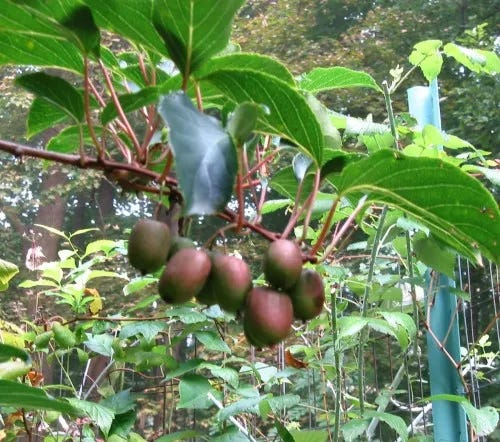
What: Kiwi is the easy one. We know her, we love her! The variety adapted to the northeast is this hardy gal, who is smaller, thinner-skinned, and reportedly more floral-tasting than her grocery-store cousin, but basically can be used the same way. Still, it’s not like many of us know how to bake with regular ole kiwi—or at least, I didn’t, until two months ago.
How to dessert it: Beyond its more obvious raw uses, kiwi is extremely cookable and bakeable. I diced up the jade-green fruits (the standard ones, since I couldn’t source the hardy ones) and turned ‘em into kiwi-sumac jam—the recipe for which follows. They also work well sliced and baked in galettes or mashed up and baked into quick bread.
When and where to get it: Hardy kiwis ripen in the fall in New England; but their larger cousin is available year-round at the grocery store (where it typically hails from California or New Zealand). If you’re in Connecticut, keep an eye on farmers markets for the daintier kind.
Haskap: Crisp, clafoutis, cake decor
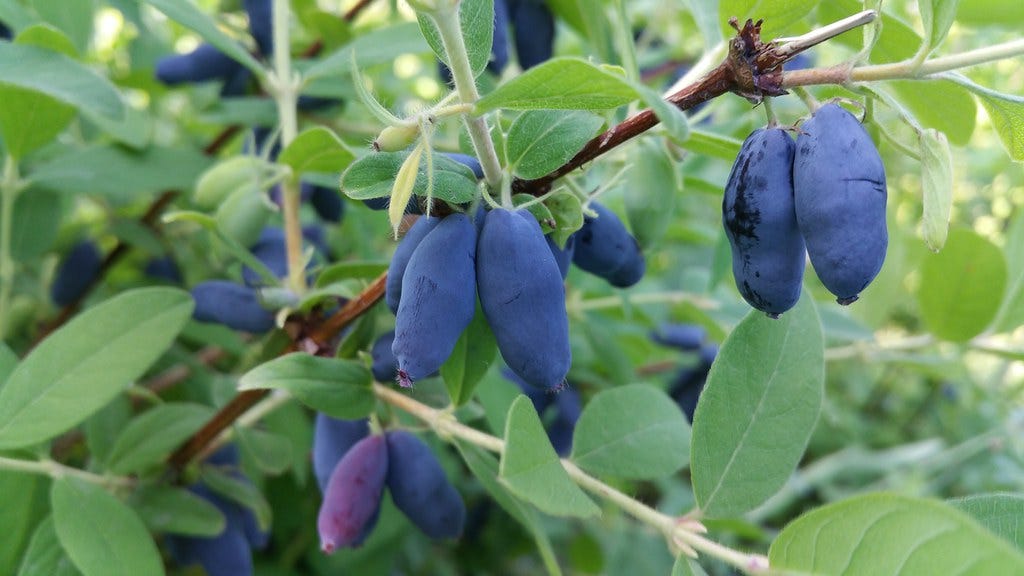
What is it: Also known as honeyberries, haskaps look like long-boi blueberries and taste like a blend between blueberries, raspberries, and rhubarb, making them a strong contender for a climate-friendly berry fave in New England. Native to the boreal regions of North America, Northern Europe, and Asia, haskaps are fine with extreme cold. Which is good for climate chaos.
How to dessert it: Haskaps are versatile—able to be baked, cooked, and eaten raw the way you would a blueberry or raspberry. Bake ‘em into pie, plunk them into clafoutis batter, or scatter a handful atop a cake.
When and where to get it: Haskaps ripen in late spring in New England and early summer in Canada. On this side of the border, they’re grown on a tiny scale by farmers like the ones with whom Lentz is working in Connecticut. They’re also among the handful of specialty berries that Cornell University is trying to grow into a commercial industry to promote diversity on New York farms. For now, northeastern farmers markets in June are your best bet to find haskaps.
Aronia berry: A supporting character in jam, natural food coloring
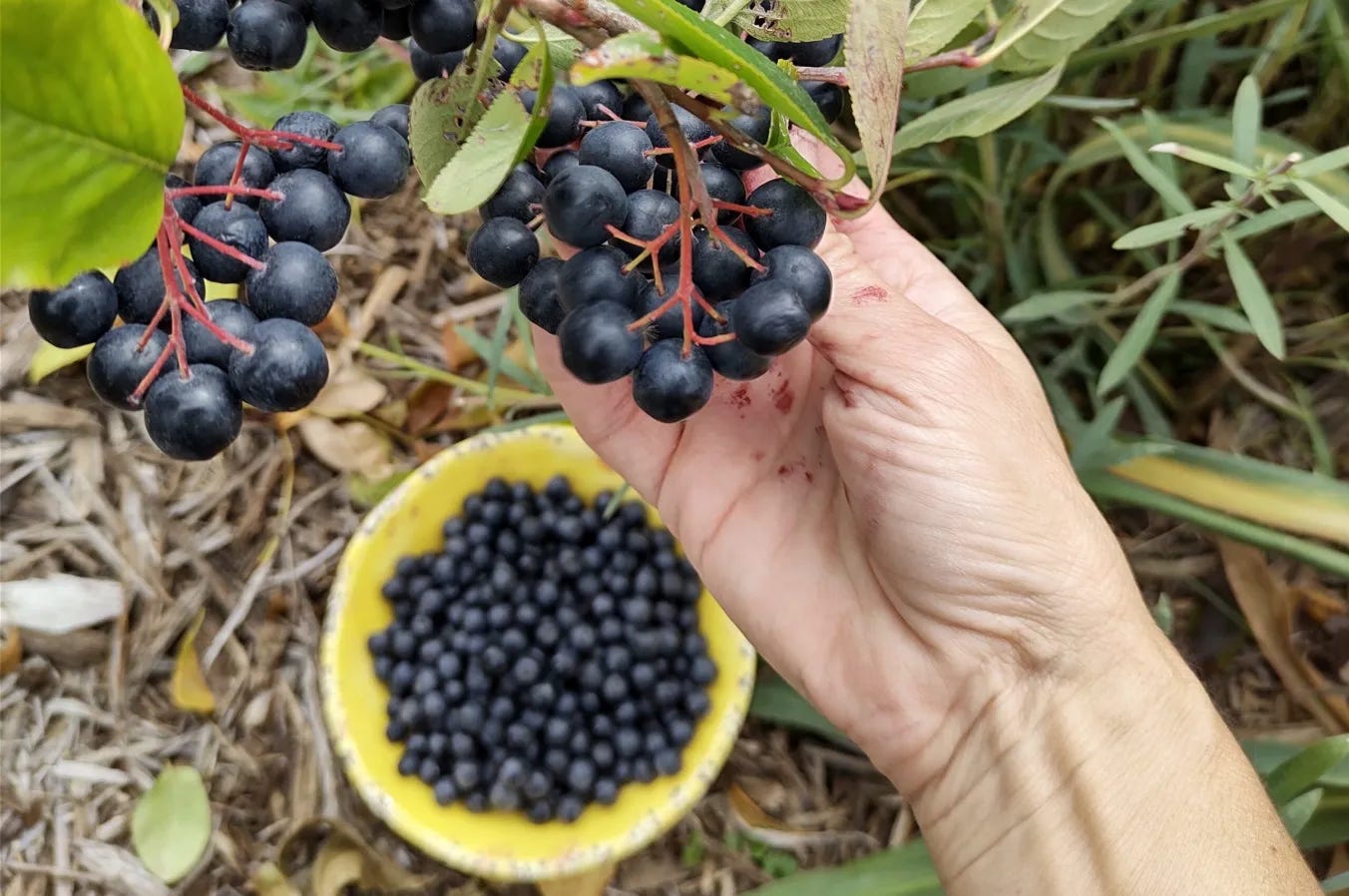
What is it: Also known as chokeberries, aronia berries are as astringent as their folk name promises when eaten on their own. A member of the rose family native to the eastern US and Canada, aronia berries are hardy, growing happily in either poor or good soil. They’ve long been known among Indigenous communities as a powerful cold remedy.
How to dessert it: The trickiest of this climate-adapted trio, the key is to cut aronia berries with milder fruit. Alan Bergo, aka the Forager Chef, tempers them with applesauce in this jam, and punches up their relatively mild flavor with spices and citrus rind. The jam, he notes, doubles as a natural food coloring for mousses and such when used in small amounts.
When and where to get it: Aronia berries are ripe in August and September in the northeast. They already have a decent presence in health food stores as a remedy, so you can find them there—as well as at the occasional farmstand in New England. It’s one of the other fruits Cornell is working on commercializing across the region.
Recipe: Kiwi-sumac quick jam
Fans of tart flavors, gather ye ‘round. Kiwi makes a bright jam on its own, but the addition of sumac (a spice native to the northeastern US and elsewhere) takes its already plentiful tartness to even more vivid new heights. It’s the perfect foil for buttery shortbread, although it’s also delightful eaten by the spoonful or spread on toast. This is a small-batch quick jam meant to be stored in the fridge and eaten within a couple weeks of making it; look elsewhere if you’re trying to get into legit canning. For a smooth jam, which looks lovely peeking out of Linzer-cookie portholes, purée the kiwis in a high-powered blender before beginning. You can also mash the kiwi or chop it finely for an almost-as-smooth result.
Yields ¾ cup jam
300g kiwi, peeled and puréed (from about 6 kiwis)
½ cup (100g) sugar
Tiny pinch salt
1 tablespoon lemon juice
¾ teaspoon ground sumac
Add kiwi, sugar, and salt to a small saucepan. Cook over medium heat, stirring occasionally, until mixture comes to a strong simmer, about five minutes.
Place a small plate in the freezer (you’ll use it in a bit). Reduce the heat to medium-low and cook for 20-30 minutes, stirring here and then, until the fruit breaks down and thickens. (We cook at a relatively low heat because kiwi has splattery tendencies.) As the jam cooks, you’ll notice smaller, more rapid bubbles eventually turn into slower, more tar-like bubbles. Once that happens, stir more often to prevent the fruit scorching on the bottom of the pan.
Get the plate out of the freezer and test your jam to see if it’s done: dab a spoonful onto the plate. Put the plate in the fridge for 2 minutes. Drag a finger through the jam. If the edges look set and not watery, you’re good to go. Otherwise, continue cooking for a few more minutes and then try again.
Once jam is sufficiently thickened, add the lemon juice and sumac and cook over medium-low for a few minutes, or until re-thickened.
Off-heat, allow jam to cool completely, then transfer to a glass jar and store in the fridge for up to a couple weeks. When ready to fill Linzer cookies, spread or pipe a scant teaspoonful onto each cookie. If it’s a bit too stiff, loosen the jam with a teaspoon of lemon juice.
Recipe: Linzer cookies with a northeastern twist
I riffed on Mariana Velásquez’s fabulous recipe for Galletitas de Cebada Tostada, using ¾ cup of toasted, whole wheat pastry flour from New York-based Farmer Ground in place of the barley flour (and decreasing the amount of the all-purpose flour accordingly), and subbing in a portion of browned butter. I also made a spiced stone fruit jam to represent what’s at risk in New England’s fruitscape, whipping up a quarter-batch of Alison Roman’s recipe and adding cinnamon and vanilla.
An extra helping
Peep my list of seven can’t-miss NYC Bakeries for Table Magazine.
Gaze raptly upon this year’s Grist 50 list, which includes
, a pastry chef I featured on Pale Blue Tart last fall who uses dessert to communicate climate science and who I nominated for the list!!Bake the other recipes that rounded out my climate-friendly trio last night: spicy maple-hazelnut caramel corn (vegan!) and soil-restoring brownies—which I was unsuccessful in getting John Kerry to stick around for but of which Alex Honnold snarfed a hilarious quantity.
Leave a comment if you grow these fruits or have other ways of dessert-ing them!


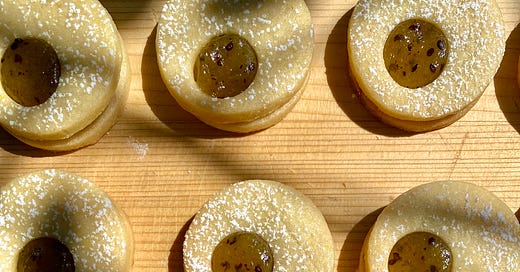





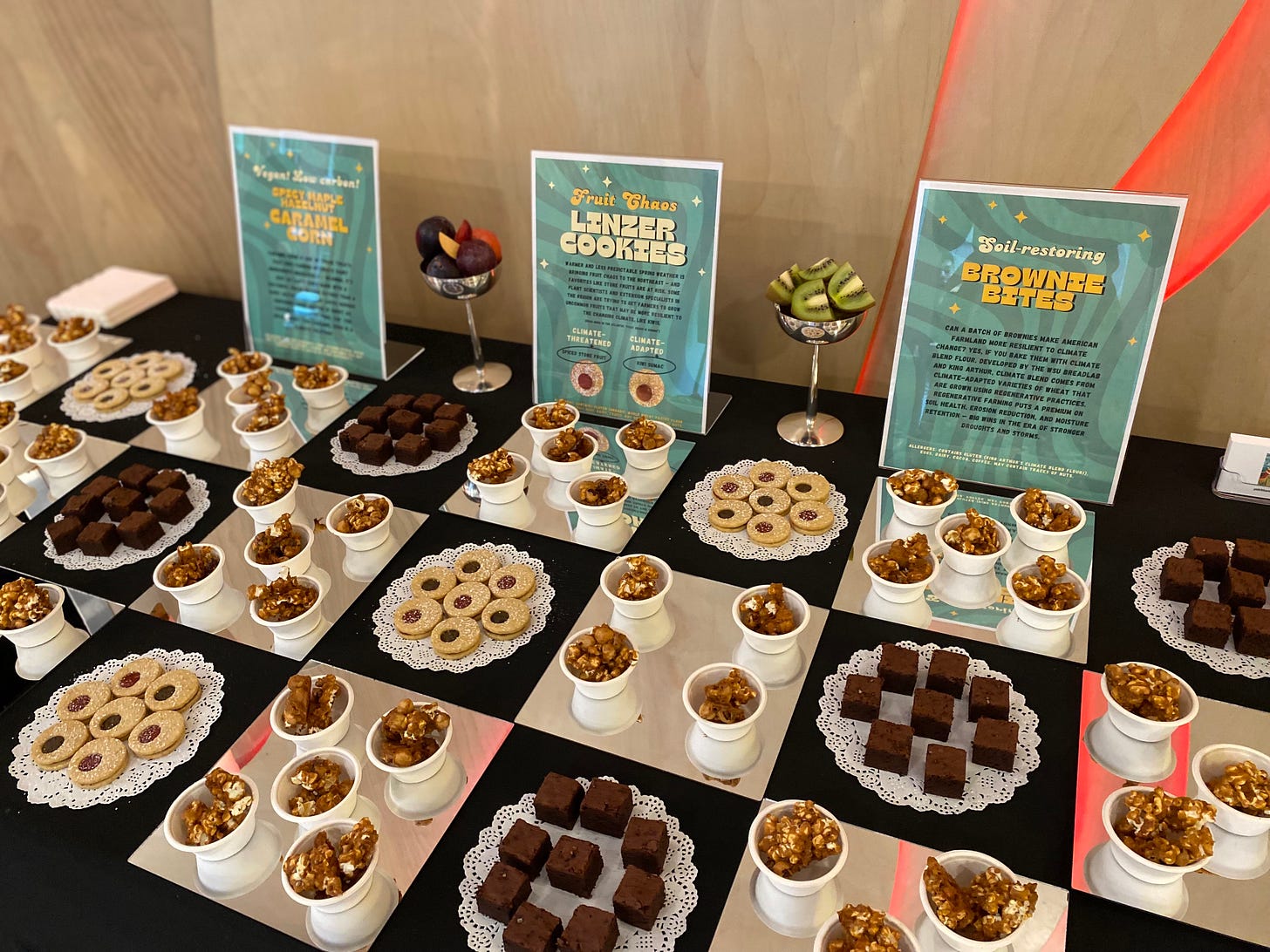
I love this! The kiwi sumac jam sounds super intriguing, I might have to try making it